Punctuation – Meaning and Definition
In English grammar, Punctuation marks play a key role. It could shape the entire sentence. It could give meaning and visibility to a sentence. The way you structure your words and sentences determines your power in using the language.
The term punctuation refers to the symbols that you use to distinguish written words into meaningful sentences. Punctuation marks can give extra details about a particular topic. The punctuation marks can be used as an important tool to understand the authors’ intentions.
The author communicates with the audience via punctuation marks. The readers could get extra information about a sentence or clause with the help of punctuation marks. In short, as the author is not speaking directly to the audience, the punctuation marks can help the readers to understand the importance of the sentences.
Furthermore, punctuation marks can be termed as a system of symbols that could give meaning to a sentence. It can also be considered as the standardized signs, marks, or symbols in written sentences to clarify the meaning. As per Collins Dictionary, “punctuation is the use of symbols to divide the written words into phrases, sentences and clauses”.
Punctuation Marks in English
There are different punctuation marks in English. Punctuation marks are similar to road signs placed on the highway of human communication. The punctuation marks can control the speed of a sentence. The punctuation marks can show an apt direction to the sentence.
In addition, it can also prevent collision between sentences and give a basic structure to every sentence.
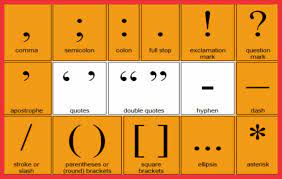
In English grammar, the period is similar to the red light in a road signal. The comma can be regarded as something similar to a flashing yellow light that asks you to slow down your sentences. The semi-colon is similar to a stop sign that wants us to ease to a halt before continuing the journey.
Along with establishing the relationship between words, punctuation marks can establish a relationship between the learners who are handling words and sentences.
- Period/Full stop
- Apostrophe
- Quotation marks
- Comma
- Colon
- Semicolon
- Exclamation mark
- Question mark
- Hyphen
- Dash
- Parentheses
- Slash
- Ellipsis
Know Punctuation Marks
| Punctuation mark | A punctuation mark (Symbol) |
| Full stop / Period | 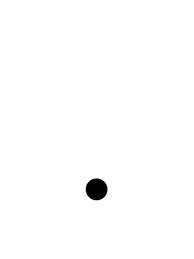 |
| Comma | 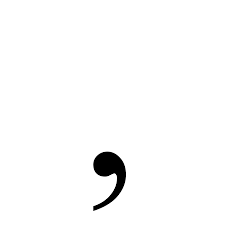 |
| Colon | 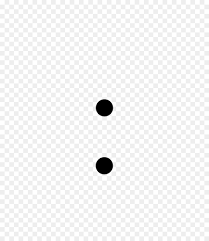 |
| Semicolon | 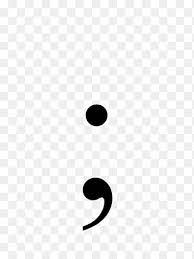 |
| Apostrophe | 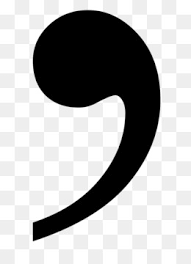 |
| Quotation marks | 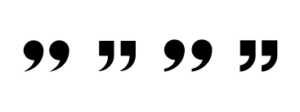 |
| Hyphen |  |
| Dash | 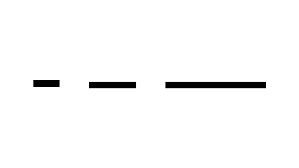 |
| Parentheses | 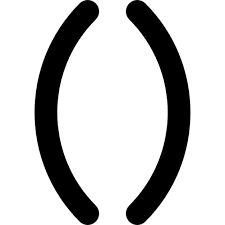 |
| Slash | |
| Exclamation mark | 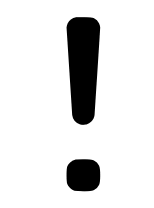 |
| Question mark |  |
| Ellipsis | 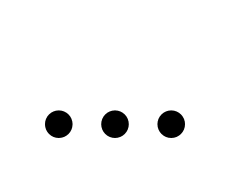 |
Period/ Full Stop
Period otherwise termed a full stop is the most commonly used punctuation mark in the English language. A full stop can be used effortlessly. A full stop determines the stop of a lengthy sentence. Moreover, a full stop can end a sentence. The full stop is most commonly used in imperative and declarative sentences. It is used to mark a long pause when compared to a semicolon or colon.
In addition, the full stop can end the particular thoughts of the writer before starting another layer of thoughts.
A sentence without a full stop is similar to a curry without salt. When there is nothing else to talk about a particular subject, you can use a full stop. It marks the end of a sentence. The full stop is also used as a point to suggest the end of one wave of thought.
Full stop gives clarity and precision to the sentences. It is a symbol without which we can’t write a meaningful line. It is a sign which attributes meaning to the sentences. If you wish to end a sentence, you have to put a full stop to end it.
You can also use it to mark the end of an instruction, order, command, or request. We can also end the website address, URL, or email address with a full stop. Everything ends with a full stop.
Examples
- She is our English teacher.
- He speaks English fluently.
- I love music.
- Please be careful.
- I had to buy a pen.
- H. Lawrence wrote Sons and Lovers.
- I wonder what is he doing in the kitchen now.
Comma
Do you love commas? Do you use this delicate sign often? Are you using a comma in the right place? You’re wondering about the same thing, right? A comma in a sentence declares that a statement is not over and there is more to add to it. It is a sign which could attribute more meaning to a sentence. Using commas in a sentence can talk a lot about a particular sentence. Many people use commas in the wrong place. Know the right time and place to apply commas. It can change the meaning and direction of the entire sentence.
For instance,
- Flying planes can be dangerous.
A comma can change the meaning of the sentence in two different senses.
Let’s look.
Add a comma after flying first and then after flying planes. See the difference.
- Flying, planes can be dangerous
- Flying planes can be dangerous.
Each sentence gives out a meaning. So, you have to use commas carefully.
A comma determines the sense of a sentence. Based on the presence of the comma in certain places, the meaning can vary.
Commonly, a comma is a powerful symbol that is used to separate words, phrases, sentences, and clauses. The items in the list can only be separated with the help of a comma. The comma can separate nouns, main clauses from subordinate clauses, and phrases from clauses.
For instance,
- Reading books, listening to audiobooks, and enjoying music can uplift the mood.
- Meenu, Anu, and Shreya are friends.
- Six years ago, she lost her eyesight.
- We went out for dinner, so we did not prepare anything at home.
Colon
Just like full stop and comma, the colon to plays a very bold role in making sentences meaningful. It is a punctuation mark that has two vertically placed periods or dots. The colon is used to introduce a list of quotations, lists, examples, summaries, explanations, etc. Directing attention to a particular matter is the main agenda of the colon.
The colon can be used to introduce. It can be used to state a particular point in a sentence. The colon is also a sign which denotes the list of necessary items. You can also make use of the colon in citations. The colon can be used for biblical references. While writing dialogue, you can use a colon to quote the words of the speaker. The colon can also be used to denote the ratios and time of a particular day. There are many uses for the colon. Knowing the worth of the colon is important to frame meaningful sentences.
For instance
- The students who wish to participate are:
- Menu
- Ragu
- Vishal
- Sita
- Varuni
- Teacher: Repeat after me, kids
- It’s 12:30 pm
- The given ratio is 4:7
- For example Malaysia, Singapore, Canada
Hyphen
Hyphen is used to refer to material portions. Hyphen is used in the abbreviated form along with the numbers, frames, distances, etc. The hyphen can also be used while giving reference to the age of the people. You can use hyphens while writing fractions and compound numbers.
In some cases, while you use prefixes and suffixes hyphens can be used. Hypen is employed to converge two words jointly to assemble a new word to indicate that a remark has diverged between the rear of one string and the opening of the following to exhibit that something is overlooking.
- Green-colored flag
- Red-eyed monster
- Six-meters apart
- Five-year-old-boy
Quotation Marks
Quotation marks are also a symbol that can be used to specify names, titles, etc. It is a pair of marks that are located around words, phrases, clauses, and sentences. If you unusually use phrases, you can use quotation marks. There are two types of quotation marks:
- Single quotation marks
- Double quotation marks
Single quotation marks are also known as inverted commas. Single quotation marks are used to quote the book titles, movie titles, character names, etc.
- I found ‘the cat’.
The meaning of ‘WFH’ is nothing other than ‘Work From Home
Double quotation marks are used to quote something said by someone without altering the sentences.
For instance :
- Martin Luther King proclaimed, ” I had a dream”.
Apostrophe
An apostrophe is used to show the possession of something by someone. It can help in forming contractions and missing lists. It is also a symbol used to suggest the omission of letters or figures along with the possessive case.
Furthermore, ownership can be defined with the help of an apostrophe. It can be placed after a noun or pronoun in a sentence. If a noun or pronoun has ‘s’ in the last letter, the apostrophe appears after ‘s’. It can also be used to form contractions like don’t, haven’t, I’m, etc.
For instance,
- Reema’s work is the best.
- Don’t overthink.
- Are you Meena’s sister?
- They aren’t talking
- Kids of the ’90s are an enthusiastic bunch.
Semicolon
In the English language, the semi-colon plays an important role. It is a very powerful symbol used to separate the lists of sentences into long sentences.
The different lists can be separated by the use of the semicolon. When you wish to distinguish the list of items, you should use a semicolon. It can also be helpful when you decide to separate independent clauses. In a compound sentence, you can also use it before a conjunctive adverb.
For instance,
- I like apples; my brother likes mangoes.
- My sister had to buy onions and garlic; body wash and liquid detergent; bread and butter.
- We planned to visit my ancestral home, but we couldn’t visit our old uncle.
- I have watched Kanthara; l also like Hridayam.
Exclamation Mark
An exclamation mark is also defined as an exclamation point. The exclamation mark is a punctuation symbol used to denote intense sentiments and emotions. It is operated in exclamatory sentences usually.
In addition, it can also use along with interjections. The exclamation marks can act as helpful while writing a sentence to indicate a word, phrase, or sentence is meant to be an exclamation.
Exclamation marks are employed at the end of exclamatory words, phrases, or sentences. You can’t always use the exclamation mark in formal sentences. The Exclamation marks can be usually used in informal writing.
- That is amazing!
- oops!
- Wow! That is a surprise indeed!
- She screamed, “You are rude”!
Question Mark
A question mark is a sign employed to punctuate interrogative sentences. You can place question marks at the end of question tags. A question without a question mark is unimaginable. It is a symbol or a mark operated in writing to denote a direct question. A question mark can be utilized at the end of interrogative sentences/direct questions. A question mark is placed to enquire about certain things in a sentence. The question mark is useful in sentences with question tags. A question mark can turn a normal declaration into a question.
For instance,
- who are you?
- why are you stressed?
- He is going to pick you up, isn’t he?
- You are a Keralite, aren’t you?


 Users Today : 633
Users Today : 633 Total views : 467682
Total views : 467682